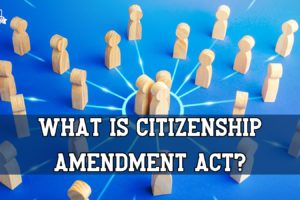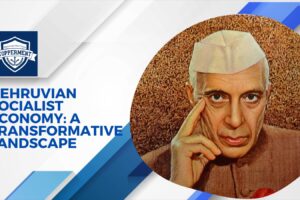
Constituent Assembly of India: Objectives and Drafting of the Constitution | UPSC Polity
The Constituent Assembly of India is a sovereign body formed on the recommendations of the Cabinet Mission in 1946. Today we will discuss in detail the constituent Assembly and the main objectives of the constitution.
Constituent Assembly was constituted on 9th December 1946. The making body of the constitution was elected by the provincial legislative assembly which had 389 members. The Initial proposal of the constituent assembly was proposed by M N Roy in the year 1934. The demand was supported by the Congress party in 1935.
Dr. Sachchidananda Sinha was the first temporary chairman of the constituent assembly. Later Dr. Rajendra Prasad was elected as the president and BN Rau was the constitutional advisor. The First meeting was held on 9th December 1946, and in this meeting, the Muslim League didn’t participate.
Once the Mountbatten plan was passed, Muslim league members also participated in the council. The Constituent Assembly was held for 11 sessions over two years, 11 months, and 18 days. The last session of the constituent assembly was concluded on January 24th, 1950.
The Constituent Assembly was elected to write the Constitution of India as an independent country. The negotiations between the Indian Independence movement leaders and the British Cabinet Mission were established. With necessary debates in the constituent assembly, the Drafting committee headed by Dr. B.R.Ambedkar prepared Indian Constitution
The Constituent Assembly’s main motto was to declare India as an Independent country with all the territories remaining autonomous and possessing residuary powers. Indians would be guaranteed justice, status equality, freedom of thought, expression, belief, faith, worship, and association and subject to the law and public morality.
Objectives of the Indian Constitution:
Sovereignty: Sovereignty is the supreme and absolute power that the government has over our country and its people. It is the backbone of the Indian constitution and protects the rights of the people. There are two types of sovereignty: internal and external. Internal sovereignty gives states the power to govern themselves and make laws if necessary. External sovereignty, on the other hand, makes the government the supreme authority and allows it to give up part of its territory if required.
Socialist: One of the most important objectives of the Indian constitution is socialism. The idea behind socialism is that it ensures equality among people and their welfare. By adding socialistic features to the constitution, it allows for fair and equal opportunities for all when it comes to income and status. Additionally, socialism expels capitalism which is often seen as a threat to economies. The main motto of this objective is to end discrimination and exploitation of any person based on religion, caste, region, or creed.
Secular: The objective of the Indian constitution that is known as secularism was introduced in order to maintain peace among the different communities. It helps to ensure the development and unity of various communities and religions. This was added as a part of the Indian constitution during the 42nd amendment. Articles 25 to 28 of the Indian constitution guarantee freedom of religion and prevent any discrimination based on religion. It is one of the aims and objectives of the salient features of the Indian constitution, and it was added to make clear that religion has no place in state business.
Democratic: The Indian constitution ensures that the citizens of India have the power to govern through democracy. India has adopted parliamentary democracy, which provides stability and allows the people to change their rules. The ruler of the country is elected by the people, and the ruler is then answerable to the people. Democracy also entitles the people to universal adult franchise, i.e, one man, one vote. Elections are conducted periodically to maintain this system.
Republic: This concept was inspired by the constitution of France. It entitles people to the power to elect their representatives. The concept of a republic lays down the foundation of our country’s government by ensuring that there will be no hereditary ruler, and the elections will be held at regular intervals of times to elect a representative and ruler of the people. Republic Indian is among the most important aims and objectives of the salient features of the Indian constitution.
Justice, Liberty, Equality: The objectives of the Indian constitution also include social, economic, and political justice and the liberty to follow any religion, any job, or any work without the interference of the state. All citizens of India are fundamentally entitled to a set of freedoms that protect their interests. Among these freedoms is the ability to express oneself, think freely, and practice any religion without judgement or discrimination.
Conclusion: The objectives cannot be modified and they may be used to define the scope of basic rights and government policy directive principles.
Also Read
- China’s Malacca Dilemma: A Strategic Vulnerability | UPSC International Relations
- China’s Belt and Road Initiative: The World’s Most Ambitious Infrastructure Project | UPSC International Relations
Follow Us For More Content On:
https://www.instagram.com/topperment/
Tag:Assembly, Constitution, Constitution Of India, Drafting, IAS, IFS, India, IPS, IRS, Objectives, Politics, Polity, UPSC



